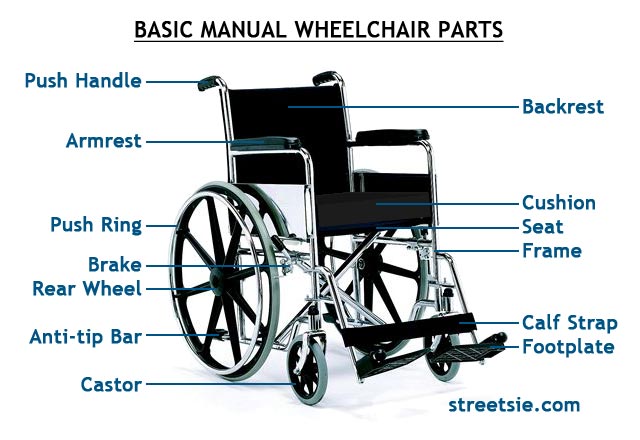The Logistics of My Wheelchair
I use a wheelchair, and I'm (gasp!) not ashamed about it.

Unlike doctors say I should be, with my loving myself being "unacceptable" and all that.
I go back to school very soon, and my entire family is nervous that my mother won't be able to lift my wheelchair into the car, which leads me to the logistics of wheelchair design and the disability tax.
Wheelchair Design
Wheelchairs that tend to be affordable to the general public tend to be cheaply designed for temporary use or use in a nursing home or used by an elderly person, because of some features or lack thereof on the standard wheelchair.

So, I'm going to break down this design, explaining the functionality as told by the manufacturers and perhaps an ulterior purpose.
Push Handles
Let's start with the obvious. The push handles angled toward the person behind the chair appear to be inviting people to push the chair without asking, instead of, say, fold-down handles or fold-in handles. The push handles are often ergonomic, height adjustable and turn downwards as if inviting passers-by to push without asking.
Armrests
Standard on most wheelchairs are permanent armrests, which do not remove or flip back. Often, they make it difficult or even impossible to self-propel and conveniently allow the person pushing to have complete control over the mobility of the "user," which is more often the person pushing the wheelchair rather than the actual disabled person.
Backrest and Seat Sling
The backrest and seat sling are often made from low-quality fabric which sag and tear over time, compromising comfort greatly. Plus, the backrest and seat often don't touch, creating an uncomfortable and often painful gap that can simply be bridged with velcro strips connecting the backrest and seat. The backrest is often very high, which decreases the user's ability to turn around and see what is behind them.
Wheels
Often, wheels on standard wheelchairs are very smooth with no treads and are completely hard, as if they are designed for hard floors, like those of a nursing home in order to seclude wheelchair users from the able world.
Footrests
Oftentimes in standard wheelchairs, the footrests are pitched nearly straight out, creating a literal barrier between people who use wheelchairs and the able world. Often, it forcefully creates distance between the user and those to whom they are speaking.
A wheelchair with optimal features for you, personally, will most likely require a prescription from often unwilling doctors plus a very high price tag (even if covered by insurance.) Improving the design of the standard wheelchair, keeping it lightweight and with a low price is absolutely necessary for the wheelchair users of this world.
Push Handles
Let's start with the obvious. The push handles angled toward the person behind the chair appear to be inviting people to push the chair without asking, instead of, say, fold-down handles or fold-in handles. The push handles are often ergonomic, height adjustable and turn downwards as if inviting passers-by to push without asking.
Armrests
Standard on most wheelchairs are permanent armrests, which do not remove or flip back. Often, they make it difficult or even impossible to self-propel and conveniently allow the person pushing to have complete control over the mobility of the "user," which is more often the person pushing the wheelchair rather than the actual disabled person.
Backrest and Seat Sling
The backrest and seat sling are often made from low-quality fabric which sag and tear over time, compromising comfort greatly. Plus, the backrest and seat often don't touch, creating an uncomfortable and often painful gap that can simply be bridged with velcro strips connecting the backrest and seat. The backrest is often very high, which decreases the user's ability to turn around and see what is behind them.
Wheels
Often, wheels on standard wheelchairs are very smooth with no treads and are completely hard, as if they are designed for hard floors, like those of a nursing home in order to seclude wheelchair users from the able world.
Footrests
Oftentimes in standard wheelchairs, the footrests are pitched nearly straight out, creating a literal barrier between people who use wheelchairs and the able world. Often, it forcefully creates distance between the user and those to whom they are speaking.
A wheelchair with optimal features for you, personally, will most likely require a prescription from often unwilling doctors plus a very high price tag (even if covered by insurance.) Improving the design of the standard wheelchair, keeping it lightweight and with a low price is absolutely necessary for the wheelchair users of this world.

Comments
Post a Comment